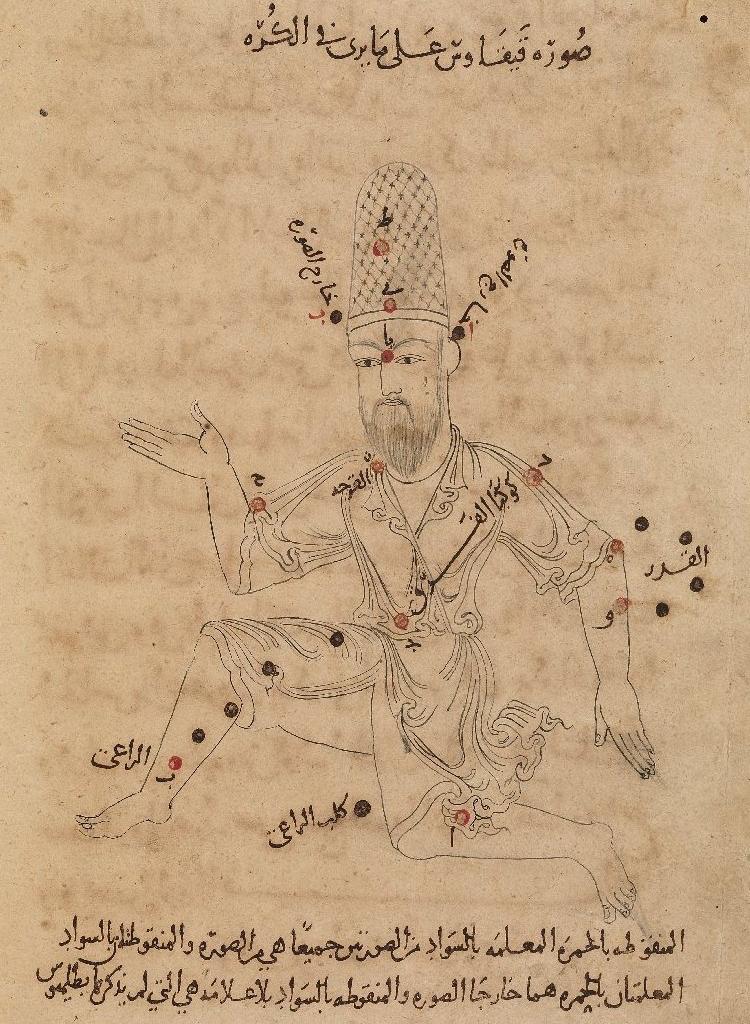Referenced as plate lxxxviii in CLOTHING viii. In Persia from the Arab conquest to the Mongol invasion - The early ʿAbbasid period by Elsie H. Peck
A particularly valuable source of information on Persian costume in this period is a manuscript of Ketāb ṣowar al-kawākeb al-ṯābeta (Treatise on the fixed stars) by ʿAbd-al-Raḥmān b. ʿOmar Ṣūfī, written in 355/965 for the Buyid ʿAżod-al-Dawla and copied by the author’s son in 400/1009. In the drawings of the personified constellations male and female clothing of the early 5th/11th century is represented in some detail. The basic male garment is a tunic similar in form to the caftan, with a diagonal closing from right to left and lapels, open in front below the waist to reveal knee-length trousers or long, loose pantaloons covering the heels. This tunic was worn over a shirt with longer sleeves (plate lxxxviii). It differs from the caftan in that it is shorter, has wider sleeves, and is made of soft material (Wellesz, pls. 2/3-4, 3/5, 4/7-8, 5/9). The most common male headdress represented in this manuscript is the soft, wound turban, flat in silhouette and set squarely on top of the head (Wellesz, pls. 2/4, 4/8, 5/9, 7/14). The personification of the constellation Cepheus, however, wears a tall hat, rounded at the top and covered with a lattice pattern (plate lxxxviii), probably representing the qalansowa ṭawīla (tall qalansowa). Richard Ettinghausen has identified the qalansowa as the official headgear of the Omayyad and early ʿAbbasid caliphs on the basis of historical and literary sources (1972, pp. 30-33), though no early pictorial representations survive, with the possible exception of the tall, rounded cap worn by a camel attendant depicted on a silver medallion of the caliph al-Motawakkel (232-47/847-61; Sourdel-Thomine and Spuler, pl. 154e). Ettinghausen traced its origin from the kyrbasía of the Achaemenids (see ii, above) through the 1st-century b.c.e. pointed hats represented at Commagenian Nimrud Dagh in southeastern Turkey and Parthian examples; tall, rounded caps were also current during the Sasanian period (Ghirshman, 1962, pp. 153-54 fig. 196, 169-170 fig, 212). By the beginning of the 5th/11th century the qalansowa had come to be worn by men who did not have royal status, even by non-Muslims. The taller version was probably of silk over a framework of reeds, whereas the shorter one may have resembled the modern fez and was most often worn wrapped in a turban. The use of the qalansowa ṭawīla is documented in illustrated manuscripts as late as the 8th-9th/14th-15th centuries (Ettinghausen, 1972, fig. 89; see ix, below).

